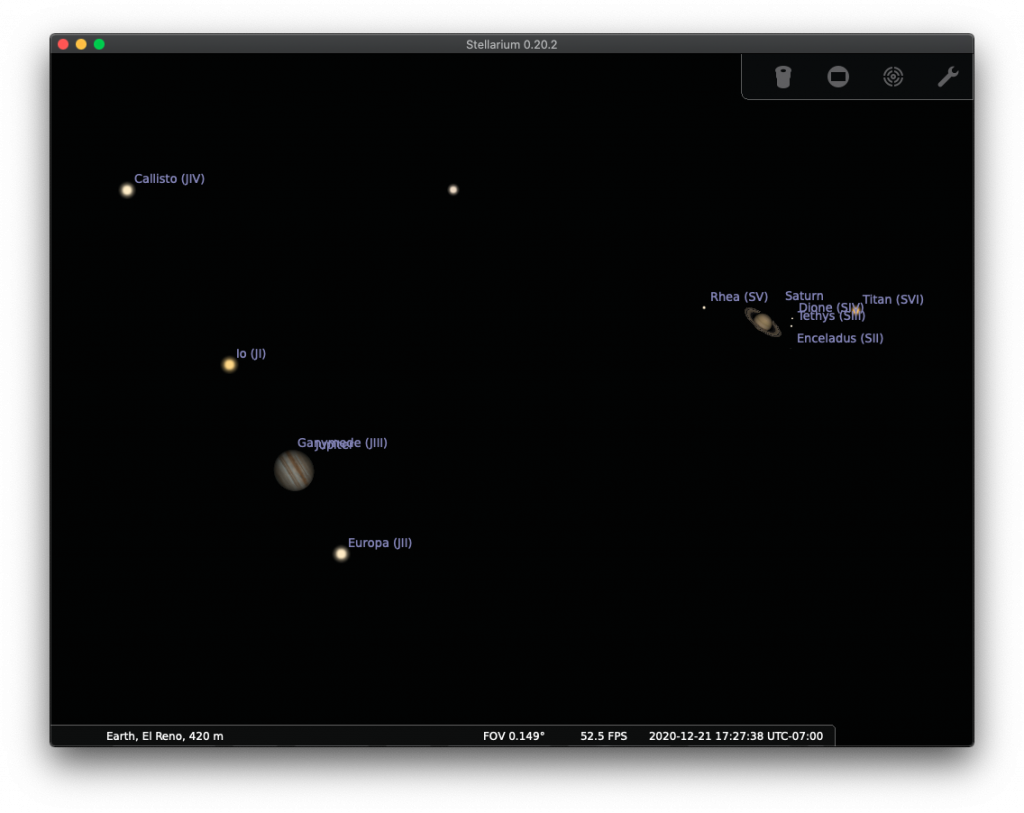Check out the following post about our project. Subscribe to my occsci substack (it’s free) if you want to get more news and information about occultations.
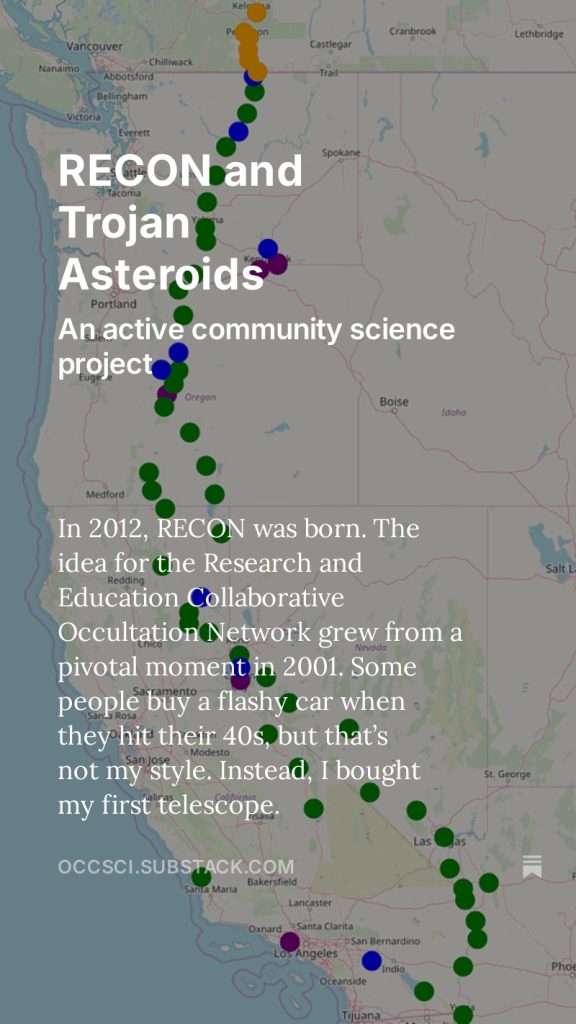

Check out the following post about our project. Subscribe to my occsci substack (it’s free) if you want to get more news and information about occultations.

We are pleased to announce that RECON Team Members Bruce Palmquist and Megan Rivard have published a curriculum case study on occultations in the National Center for Case Study Teaching in Science (NCCSTS) Case Collection!
The activity is titled Moons or Rings? Stellar Occultation and Chariklo the Centaur. We encourage you to check it out and also to pass along to other educators! Thanks, Bruce and Megan!!!
Not for lack of activity, it has been a while since our last RECON blog post. Below are some updates updates we wanted to share with the community.
During December 2022 and January 2023, RECON teams coordinated to successfully measure Comet 29P/Schwassman-Wachmann (also referred to as SW1) on three occasions: four detections on 19 December, 2022; one detection on 27 December, 2022; and five detections on 28 January, 2023 (all UT dates). Preliminary results were shared during the Asteroids, Comets, and Meteorites Conference in Flagstaff Arizona this past June.
On 2 February, 2023, roughly two dozen RECON team members joined another 150+ students and amateur and professional astronomers to deploy over 100 telescopes in Kansas (between Salina and Wichita) along with Spain and Portugal in an effort to recover the moonlet Shaun that orbits the NASA Lucy mission target Polymele. The campaign was successful, with multiple detections of Polymele and one chord on Shaun. RECON team members interested in helping with addition Lucy campaigns should stay tuned to our Lucy Occultations Slack channel.
This summer, Southwest Research Institute has launched new Lucy Occultations Community Page – https://lucy.swri.edu/occultations.html – for sharing occultation opportunities and accomplishments more broadly. The site features past and upcoming Lucy occultations, resources, results and highlights, along with a space for new participants members to express interest in getting involved.
As we look toward the 2023-24 academic year, we plan to engage RECON teams in a number of campaigns involving Trojan asteroids along with Main Belt Asteroid 269 Justitia. Because shadow prediction uncertainties are lower for these objects which are closer to Earth, most of these campaigns will involve smaller subsets of the RECON community engaging in targeted campaigns. Stay tuned … and go RECON!
Early in the morning on Saturday June 4, RECON teams from Arizona will be helping with an occultation campaign involving binary Trojan asteroids Patroclus and Menoetius.
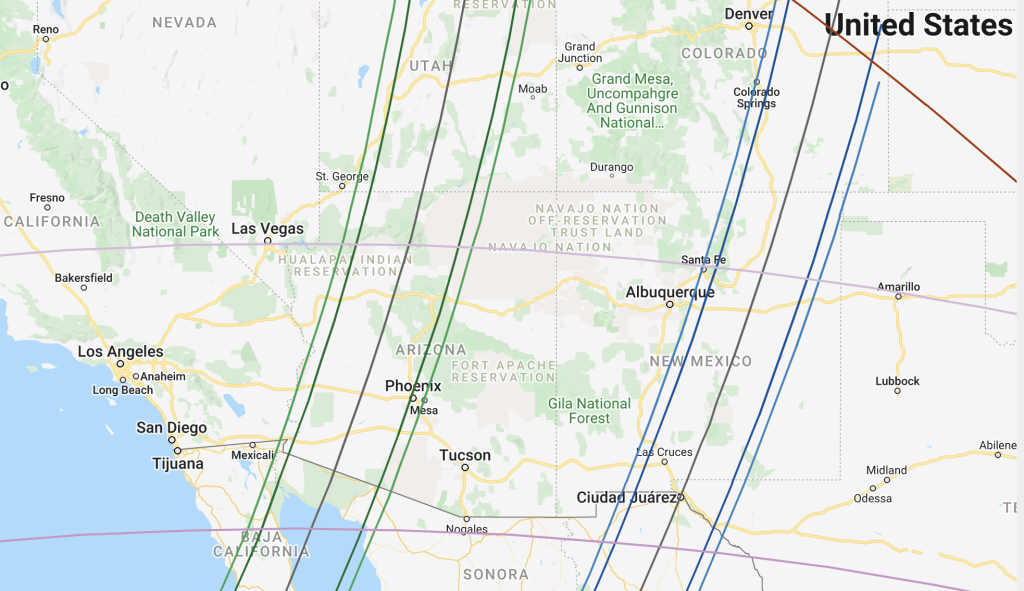
This is not an official RECON campaign, but these southern teams will be collaborating with IOTA astronomers to collect data that will be useful for five upcoming campaigns in Australia occurring from late June through late July.
Echeclus, a Centaur averaging 10.7 AU from the Sun, has demonstrated comet-like behavior over the past two decades as it reached its perihelion distance of 5.8 AU in April 2015. From 2005 through 2017, ground based telescopes observed a coma in the vicinity of Echeclus. Shown below are Images of Echeclus and its coma taken by P. Rousselot in March 2006 using the ¸8.2-m ESO Very Large Telescope and FORS 1 instrument.
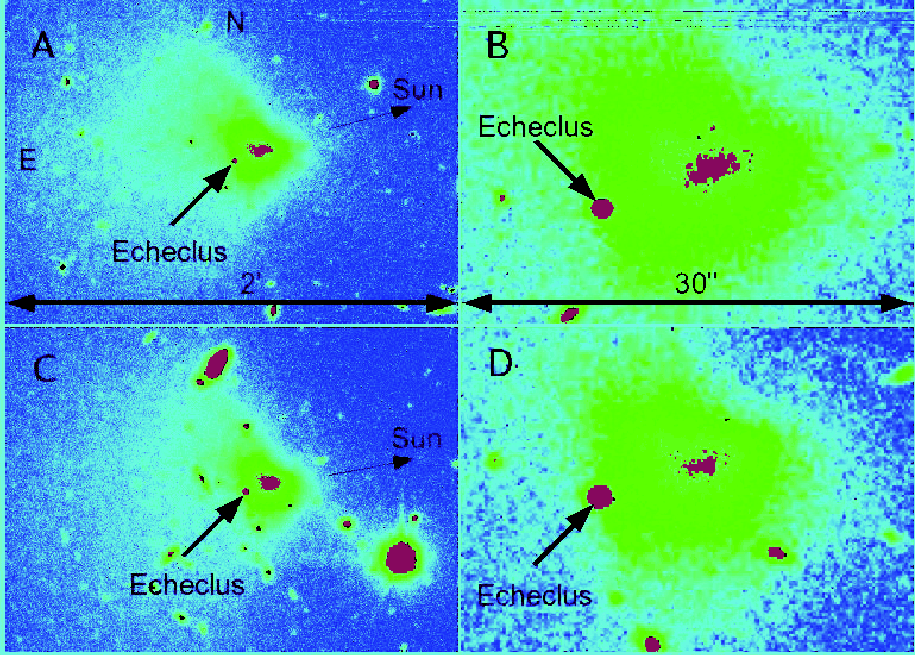
This week, RECON has the opportunity to make follow up observations regarding whether any cometary behavior remains. At a distance of 10.2 AU from Earth, the Centaur will be passing in front of an extremely bright magnitude 9.9 star at 08:35 UTC on January 6, 2022, this coming Wednesday night/Thursday morning. Every observing site that is able to record data will help to probe whether there is any cometary gas remaining in the neighborhood of the object thanks to the unusually bright star! The rapid frame rate we can collect will be good for detecting small yet dense structures. By adding all the data together we can put more sensitive limits on the properties of any material near Echeclus. The more sites we have, the more sensitive our limits will be. It is very unlikely that we will have another opportunity to repeat this particular observation so the best of luck to everyone.
For more information on this occultation opportunity, visit the Event Page for (60558) Echeclus.
The NASA Lucy spacecraft is being prepared for its launch from Cape Canaveral, Florida, on Saturday morning, October 16. This mission will use two Earth gravity assists to fly by four Trojan astroids located in the L4 cloud 60 degrees ahead of Jupiter in 2027-2028 and a third Earth gravity assist to fly by a binary asteroid in the L5 cloud in 2033. Check out the interactive website Where is Lucy? to view the spacecraft location over the duration of its decade-long mission.
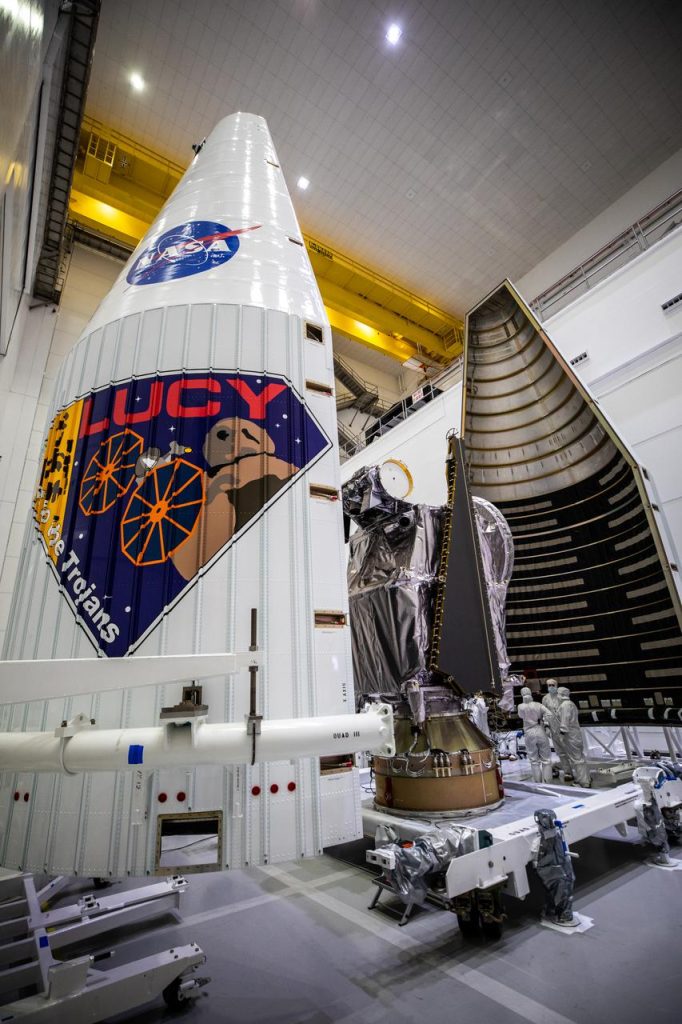
In support of Lucy mission flight planning and science, the RECON network will be participating in a mobile deployment on the morning of October 20 to measure the shadow of the first target of the mission, Eurybates. Over 60 RECON participants and other volunteers will be meeting in Las Vegas starting Sunday, October 17, to prepare for this campaign which will involve at least 37 telescope sites. A snapshot of an interactive map of the occultation shadow track is provided below. The occultation event, which involves a magnitude 13.5 star in the constellation of Taurus, occurs early on the morning of Wednesday, October 20.
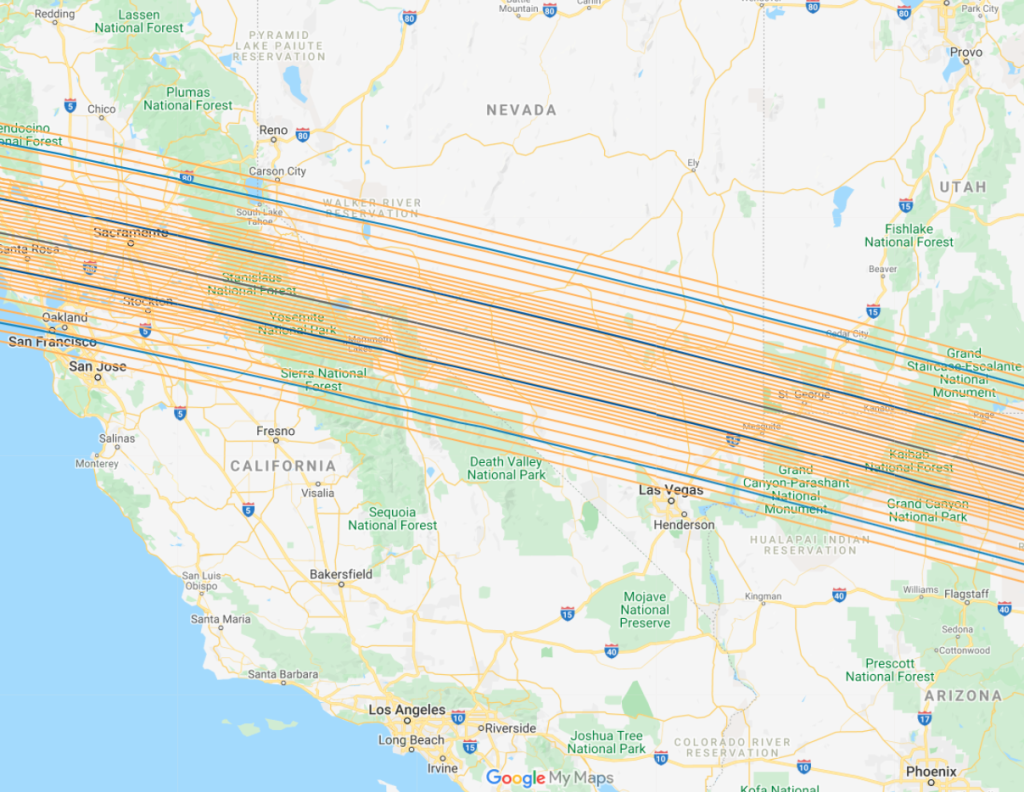
The occultation event, which involves a magnitude 13.5 star in the constellation of Taurus, occurs early on the morning of Wednesday, October 20. Sending positive intentions to both the launch team at Kennedy Space Center and to our RECON teams participating in this occultation campaign.
The NASA Lucy Mission will fly by the binary Trojan asteroid system (617) Patroclus/Menoetius in 2033. Ground-based stellar occultation data is essential both for mission planning and our understanding of minor planets. On Sunday, May 9 at 8:37:55 UT, the shadows of these 113km and 108km asteroids will sweep over the southern US as they occult an 11.5 magnitude star in Scorpius.
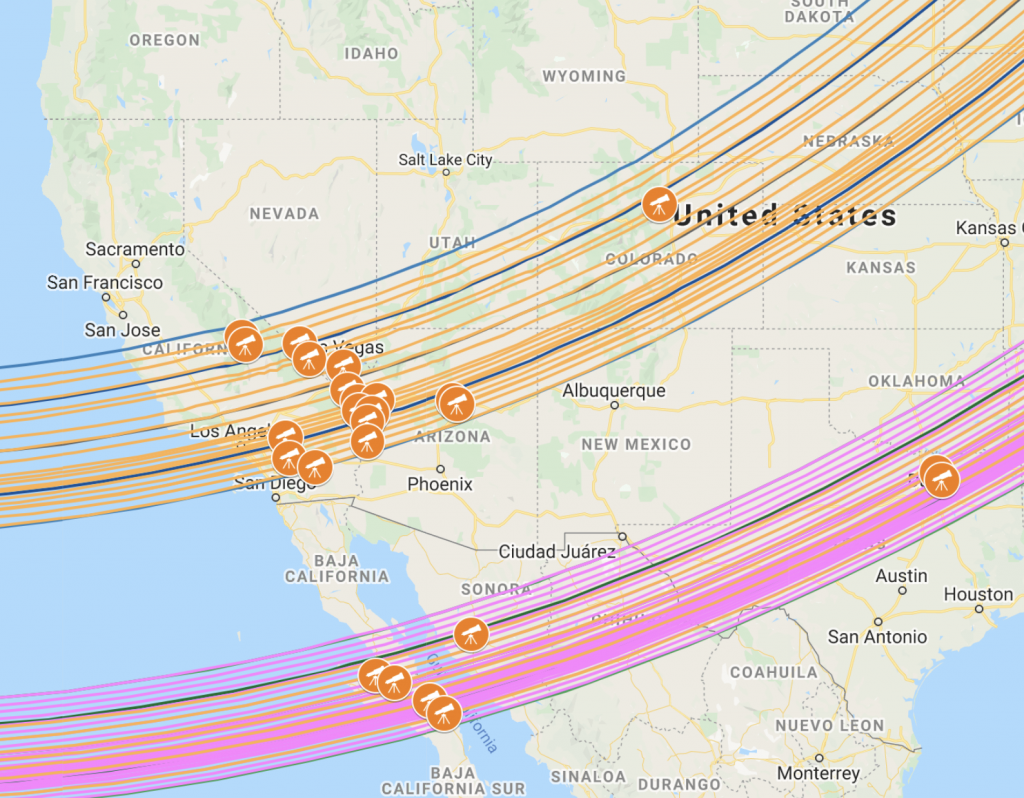
To measure this event, roughly 20 teams affiliated with RECON will measure Patroclus from primarily fixed site locations (orange chords) while another 30 teams will measure Menoetius from primarily mobile sites deployed in Texas (purple chords).
On Thursday/Friday night, April 15-16, Hi’iaka (a satellite of Haumea) will be occulting a bright star (magnitude 11.9) with a shadow path centered almost perfectly over the RECON network! The occultation prediction below was updated just this week based upon a successful occultation chord obtained on April 6 at Oukaimeden Observatory in Morocco. This event (starting around 6:30UT on April 16 for locations west of Colorado) is an exceptional science opportunity to better understand and characterize this moon and the Haumea system. We look forward to having all RECON hands on deck to capture this important event!
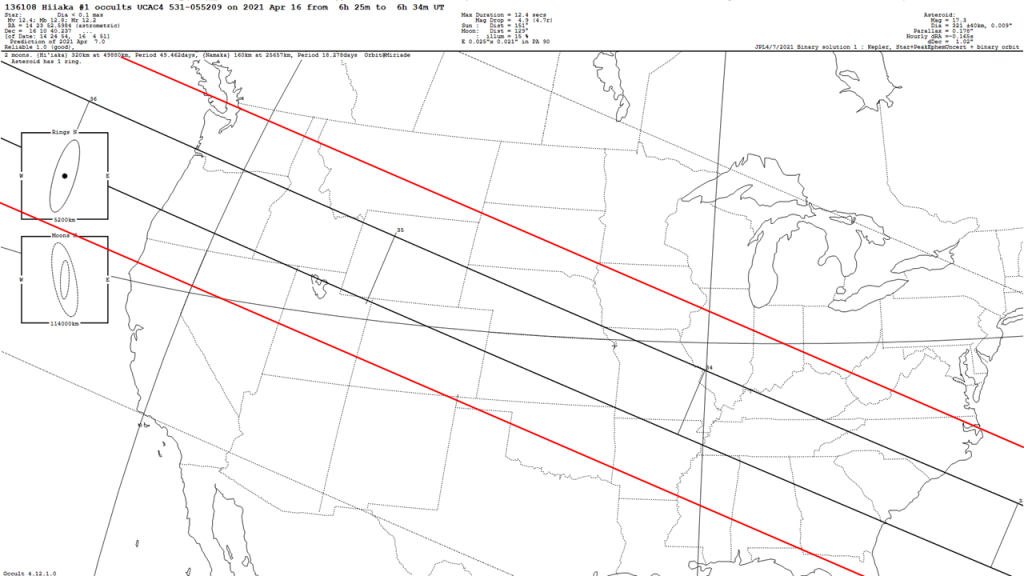
As a follow-up to John’s posting of the Jupiter-Saturn conjunction, I thought I would post the below image. This is a composite image of the individual planets from a number of videos taken that evening. The videos were taken very early after sundown to take advantage of the elevation of the planetary conjunction and the somewhat better seeing that provided. The telescope was a polar mounted 12” Meade LX200GPS with a 3.3 focal reducer using a Watec 910 HX black and white camera. Each short video was made with an exposure appropriate for the planet as Jupiter is significantly brighter than Saturn. A slightly longer exposure was also taken to get the three moons of Jupiter. The better image of each planet from the videos was then cut and pasted into this 720 by 480 composite. The relative positions of the planets is somewhat different than John’s Stellarium rendition, as in this one north is up.
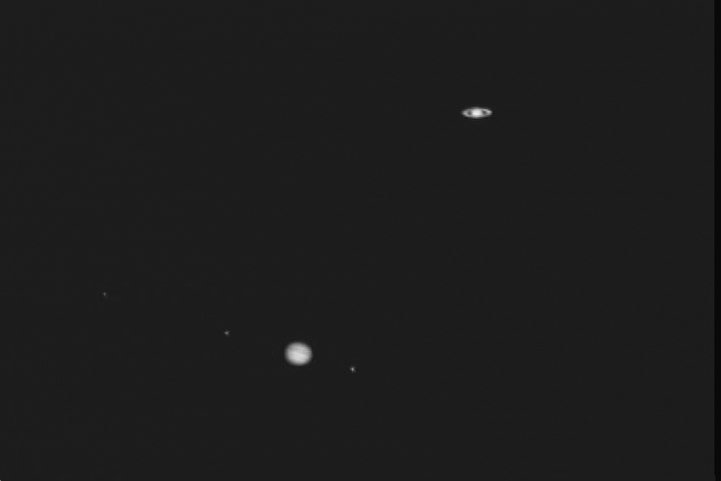
RECON is excited for our second occultation campaign of the 2020-21 academic year involving Kuiper Belt Object 04VV130 in a 3:2 resonance with Neptune. This event will occur a quarter hour before 9PM PST/10PM MST on the evening of Winter Solstice, Monday December 21. In addition, on this evening Jupiter and Saturn will be less than 0.1 degree from each other and visible in our telescope camera field of view and eyepiece. This is the closest Jupiter-Saturn conjunction visible in the night sky in the past 800 years! We highly encourage ANYONE with a telescope of ANY SIZE to check out Jupiter and Saturn this evening in the hour following sunset. Below is a quick shot from Stellarium of how close these two largest planets will appear. Should be quite the telescope sight!
